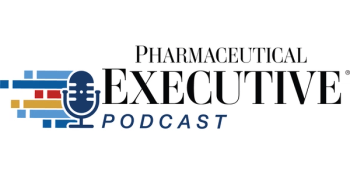
Oncology Care Index Spurs J&J to Address Fragmentation in Cancer Treatment
Biljana Naumovic, US President, oncology, solid tumor, Johnson & Johnson Innovative Medicine discusses key takeaways from the Oncology Care Index and how they are shaping the company’s approach to clinical research, community partnerships, and continuity of care.
In an interview with Pharmaceutical Executive, Biljana Naumovic, US President, oncology, solid tumor, Johnson & Johnson Innovative Medicine, discussed how the company is responding to growing challenges in cancer care revealed by its Oncology Care Index. With 76% of healthcare providers reporting feeling overwhelmed by the pace of innovation, the index offers critical insights into the barriers physicians face when translating breakthroughs into clinical practice. Naumovic outlined how J&J is using these findings to drive meaningful support for oncologists—through enhanced research access, community-based care models, responsible integration of AI, and targeted efforts to reduce cognitive burden across the care continuum.
Pharmaceutical Executive: What insights from the Oncology Care Index most surprised or resonated with you, and how are they influencing J&J’s current strategy in oncology?
Biljana Naumovic: One surprising—and perhaps urgent—insight was how much potential exists for physicians in community settings to bring research directly to their patients. Essentially, it’s about delivering research where patients are actually being treated. That stood out on one side of the equation, and I’ll touch on how we’re addressing that.
On the other side is the idea of a care continuum. As more patients move through multiple lines of therapy and receive treatment across different institutions, we cannot allow them to be lost in the system. It's critical that we stay connected across the continuum of care to ensure that patient support and therapeutic pull-through happen where they’re needed most.
On the clinical research front, we're addressing this in several ways. First, we're designing clinical trials in partnership with community oncologists that reflect real-world treatment conditions. We’re leveraging these insights early to help influence changes to NCCN guidelines and better support physicians. We've already done this successfully in multiple myeloma, and in solid tumors like lung cancer. This approach allows us to support physicians by bringing research directly to the community setting, where roughly 80% of U.S. oncology patients receive care.
Second, we're working to co-develop protocols with community oncologists, ensuring that research conducted can actually be implemented in those settings. Simultaneously, we're advocating for broader U.S. policy changes to expand where research can take place—beyond just academic institutions. This includes supporting the work that physicians are already doing to make research more accessible and equitable. That’s a major part of our commitment as a company, and we plan to deepen that work.
The other major area is around care transition and support. In multiple myeloma, for example, patients are now receiving fourth, fifth, and even sixth lines of therapy. They're frequently moving between academic centers and community institutions. We’re supporting training, onboarding, and treatment enablement to ensure that these therapies—many of which are quite complex—can be initiated and not just maintained in the community setting.
Ultimately, it’s about ensuring that patients receive the right care as close to home as possible, which is incredibly important. These were some of the most striking insights from the Index, and we’ve already begun acting on them—supporting both physicians and patients in navigating these evolving challenges.
Full Interview Summary: Johnson & Johnson (J&J) launched the Oncology Care Index to better understand the mounting pressures oncologists face amid rapid innovation—highlighting that 76% of healthcare providers feel overwhelmed. In 2024 alone, the FDA approved 50 new indications and 11 new molecular entities, underscoring the urgent need to translate breakthroughs into practical care. J&J uses the index not as a self-promotional tool but as a catalyst for industry-wide dialogue around care delivery, implementation of innovation, and systemic barriers.
Two insights from the index stood out: the difficulty community oncologists face in accessing clinical research and the fragmentation in the continuum of care as patients transition between treatment centers. To address these, J&J is expanding access to community-based clinical trials and co-developing protocols with community providers, particularly in areas like multiple myeloma and lung cancer. They're also pushing for policy changes that support non-academic trial sites. At the same time, the company is investing in training and infrastructure to ensure continuity of care and appropriate treatment closer to patients’ homes.
J&J sees artificial intelligence (AI) as a major opportunity to alleviate provider burden but acknowledges that true adoption requires collaboration across the ecosystem. The company is leveraging AI to improve trial recruitment and streamline decision-making but stresses the need for open, connected databases and industry-wide alignment.
To combat burnout and cognitive overload, J&J is focused on delivering timely, contextualized education and CME programs, supporting advanced practice providers and nurses, and enhancing patient support services.
Looking ahead, J&J hopes to see decreased provider overwhelm and more seamless integration of innovation into care, driven by empowered community oncologists, improved transitions of care, and greater engagement of frontline healthcare workers in both research and treatment delivery.
Newsletter
Lead with insight with the Pharmaceutical Executive newsletter, featuring strategic analysis, leadership trends, and market intelligence for biopharma decision-makers.




